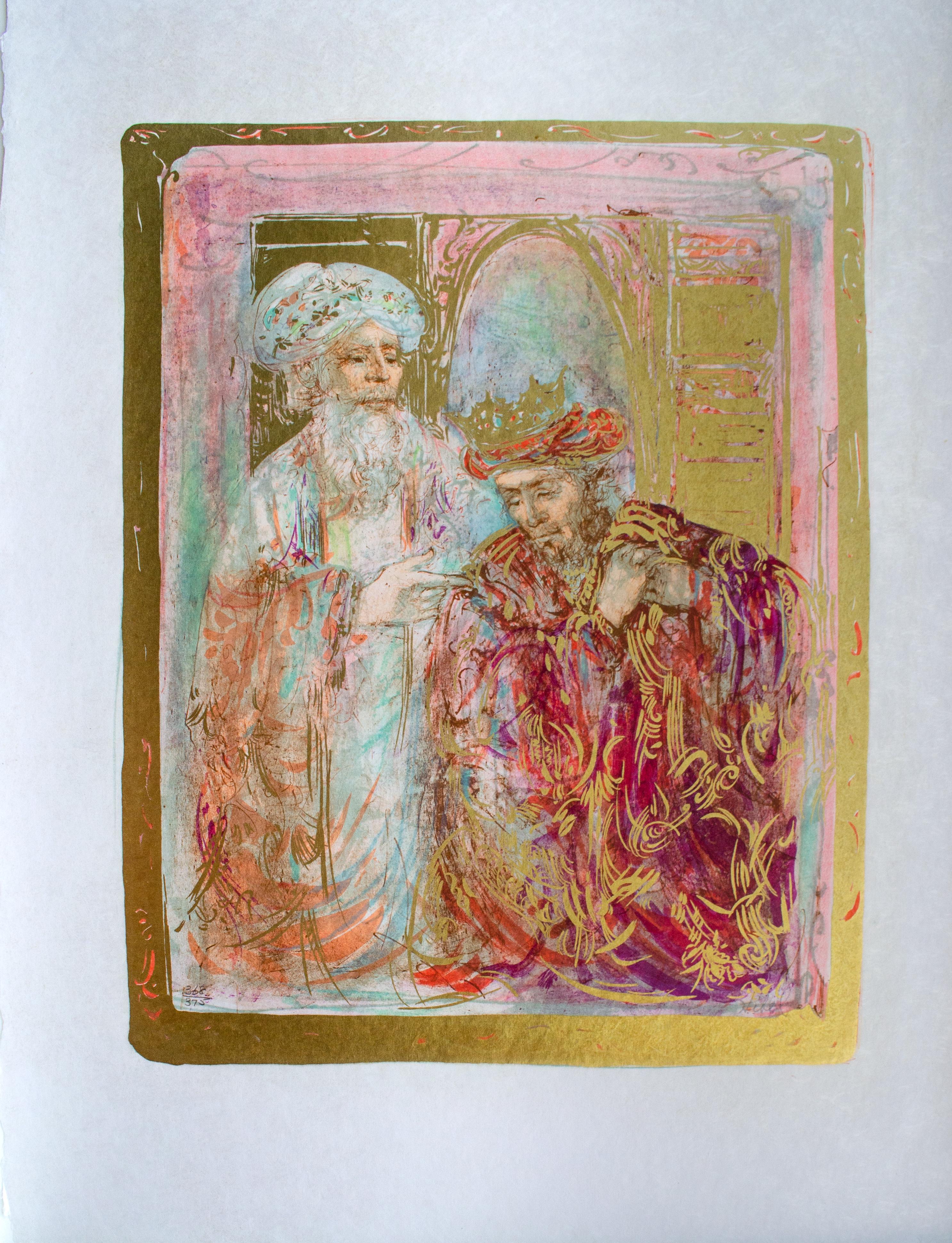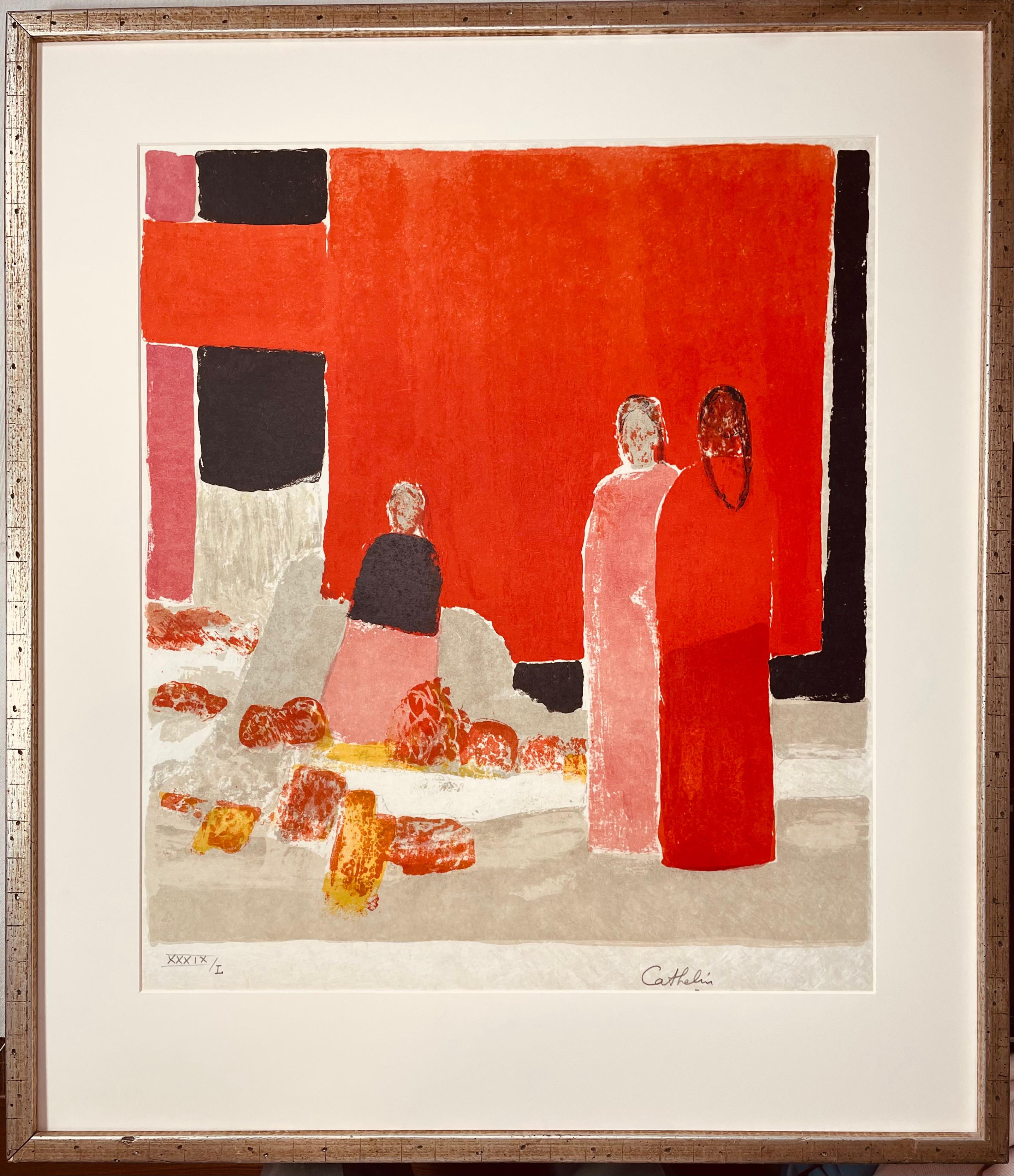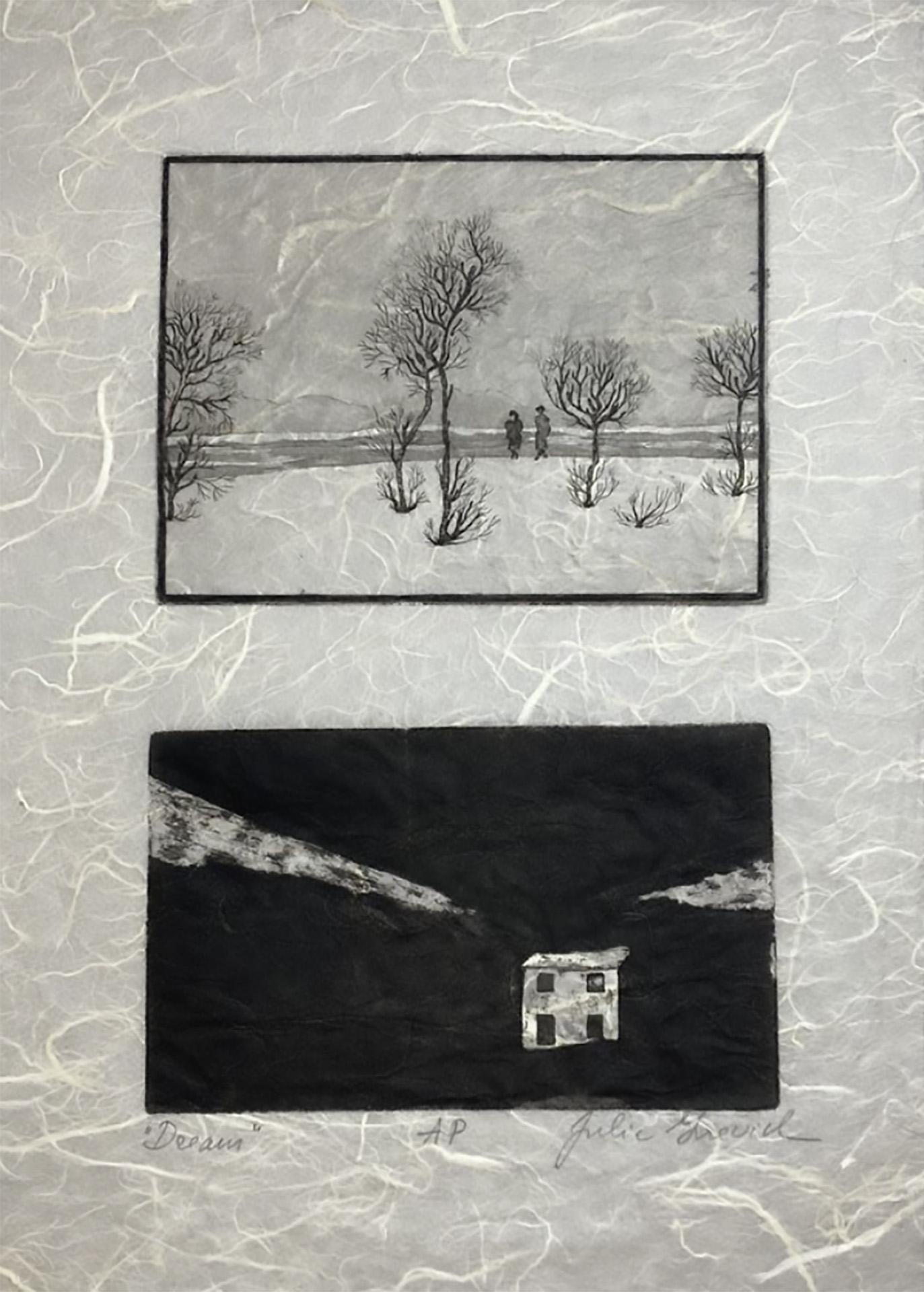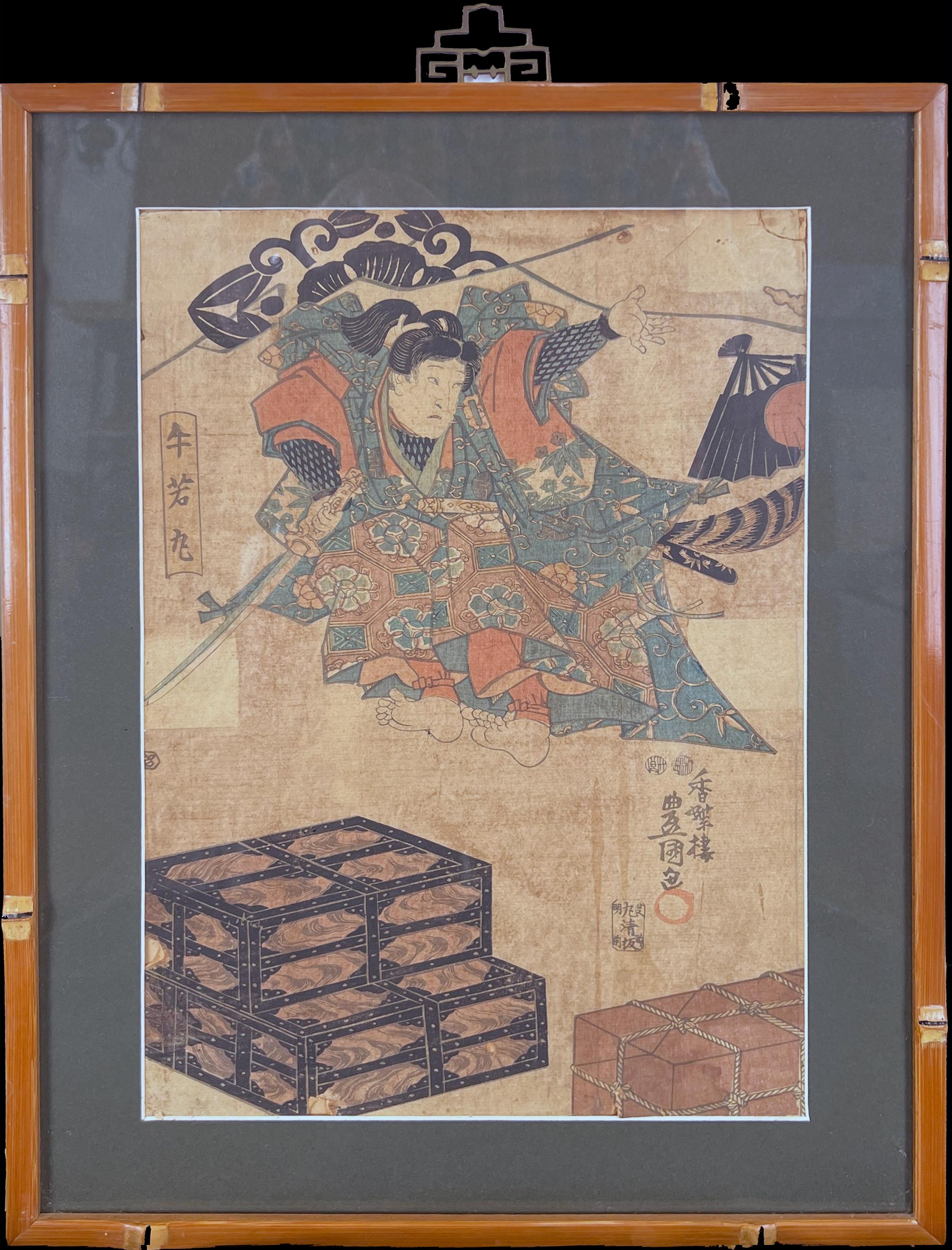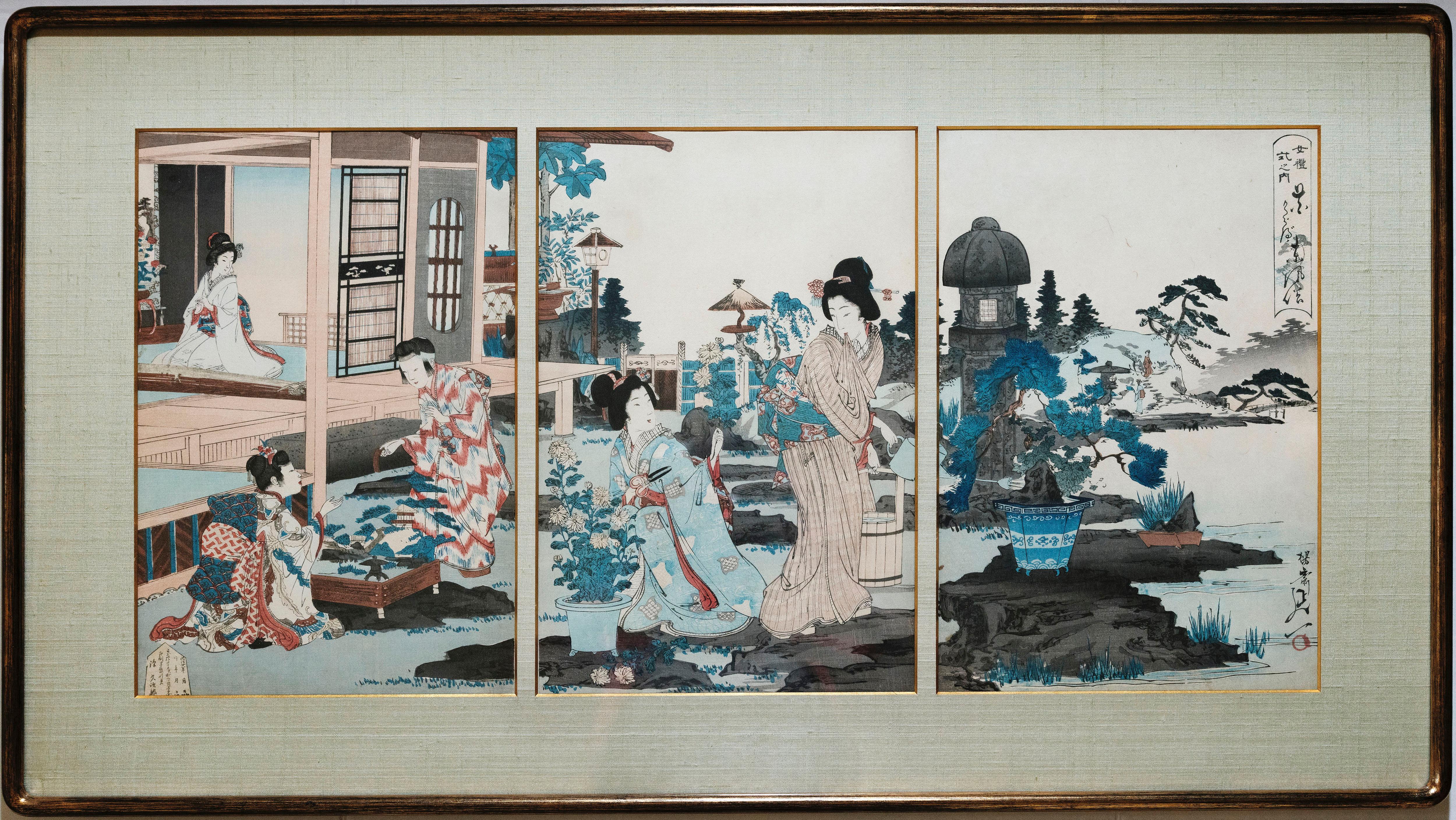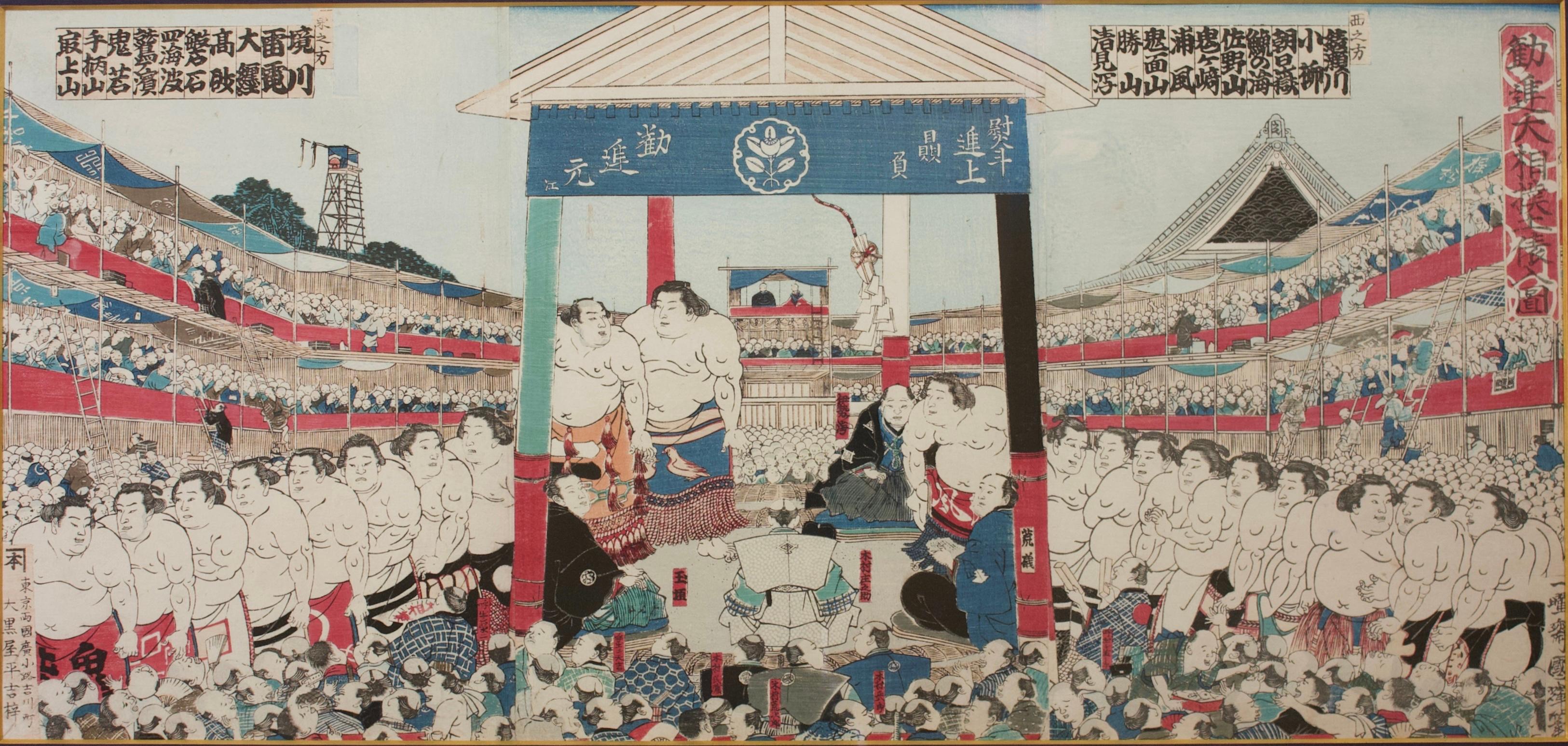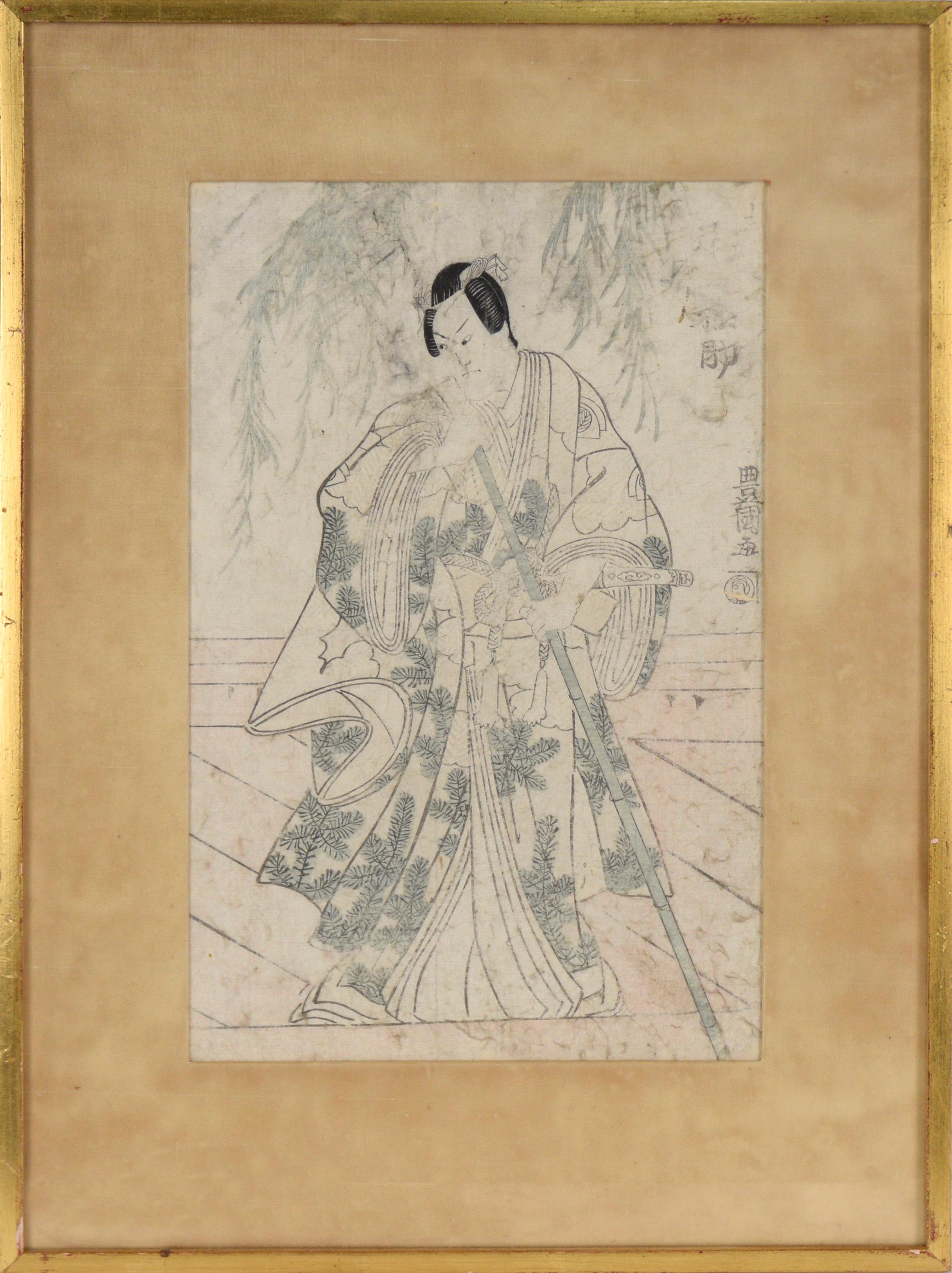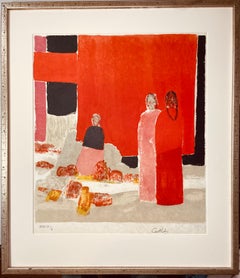Les Mexicaines
View Similar Items
Want more images or videos?
Request additional images or videos from the seller
1 of 7
Bernard CathelinLes Mexicainescirca 1975
circa 1975
About the Item
- Creator:Bernard Cathelin (1919-2004, French)
- Creation Year:circa 1975
- Dimensions:Height: 29 in (73.66 cm)Width: 21 in (53.34 cm)Depth: 0.1 in (2.54 mm)
- Medium:
- Movement & Style:
- Period:
- Framing:Framing Options Available
- Condition:
- Gallery Location:Long Island City, NY
- Reference Number:1stDibs: LU4661688933
Bernard Cathelin
Bernard Cathelin was a French painter born in Paris and a member of the School of Paris which included Picasso, Chagall, Matisse, Dufy and many others including Maurice Brianchon, Cathelin's teacher at the Ecole Nationale Supérieure des Arts Décoratifs.
About the Seller
4.8
Platinum Seller
These expertly vetted sellers are 1stDibs' most experienced sellers and are rated highest by our customers.
Established in 1979
1stDibs seller since 2014
2,698 sales on 1stDibs
More From This SellerView All
- Les MexicainesBy Bernard CathelinLocated in Long Island City, NYArtist: Bernard Cathelin, French (1919 - 2004) Title: Les Mexicaines Year: circa 1975 Medium: Lithograph on Japon paper, signed and numbered in pencil Edition: 24/50 Image Size: 21.5...Category
1970s Modern Figurative Prints
MaterialsRice Paper, Lithograph
- VIII from Les Marionnettes, Abstract Gouache and Drypoint by Hans BellmerBy Hans BellmerLocated in Long Island City, NYArtist: Hans Bellmer, German (1902 - 1975) Title: VIII from Les Marionnettes Year: 1969 Medium: Hand-colored Drypoint Etching on Rice Paper, signed in pencil Image Size: 12 x 11 inch...Category
1960s Surrealist Figurative Prints
MaterialsGouache, Rice Paper, Drypoint
$1,280 Sale Price20% Off - "The Football Player, " Woodcut Print on Rice Paper by Leonard BaskinBy Leonard BaskinLocated in Long Island City, NYThis woodcut print was created by American artist Leonard Baskin. Baskin is well known for his somewhat grotesque, intricate, surreal drawings and natural subject matter. This print ...Category
1950s Surrealist Figurative Prints
MaterialsWoodcut, Rice Paper
- "Fiorentino, " Woodcut Print on Rice Paper, circa 1950 by Leonard BaskinBy Leonard BaskinLocated in Long Island City, NYThis woodcut print was created by American artist Leonard Baskin. Baskin is well known for his somewhat grotesque, intricate, surreal drawings and natural subject matter. This print ...Category
1950s Surrealist Figurative Prints
MaterialsRice Paper, Woodcut
- "Dierdre, " Woodcut Print on Rice Paper by Leonard BaskinBy Leonard BaskinLocated in Long Island City, NYThis woodcut print was created by American artist Leonard Baskin. Baskin is well known for his somewhat grotesque, intricate, surreal drawings and natural subject matter. This print ...Category
1950s Surrealist Figurative Prints
MaterialsRice Paper, Woodcut
- "Custos Morum (Guardian of Morals)" Woodcut Print on Rice Paper, circa 1950By Leonard BaskinLocated in Long Island City, NYThis woodcut print was created by American artist Leonard Baskin. Baskin is well known for his somewhat grotesque, intricate, surreal drawings and natural subject matter. This print ...Category
1950s Surrealist Figurative Prints
MaterialsRice Paper, Woodcut
You May Also Like
- Two Fine Prints from the David Suite by Edna Hibel, 1978By Edna HibelLocated in Larchmont, NYEdna Hibel (American, 1917-2015) Two Lithographs from the David Suite, 1978 Hand pulled original lithograph on Japanese rice paper Sheet: 26 x 20 in. Signed lower right: Hibel Number...Category
1970s Modern Figurative Prints
MaterialsRice Paper, Lithograph
- "Les Mexicaines" / "Mexicans"By Bernard CathelinLocated in Berlin, MDBernard Cathelin (French 1919-2004) "Les Mexicaines" Colored Lithograph on Rice Paper. A peaceful impressionistic scene of three Mexican women in the street. Red. Orange. Black. W...Category
Late 20th Century Abstract Impressionist Figurative Prints
MaterialsRice Paper, Lithograph
- "Gertrude" - Eleven Color Woodcut on Laid Rice Paper 2/45Located in Soquel, CA"Gertrude" - Eleven Color Woodcut on Laid Rice Paper 2/45 Portrait of a woman by artist, Dan Miller (American, b. 1928) made by layers of color in woodcuts in Miller's signature sty...Category
1980s Contemporary Portrait Prints
MaterialsRice Paper, Laid Paper, Woodcut
- DreamLocated in New York, NY2011, Intaglio on rice paper AP editionCategory
2010s Expressionist Abstract Prints
MaterialsIntaglio, Rice Paper
- "First Horse Day, 1896" - Chiyoda Palace - Japanese Woodblock by Chikanobu YoshuBy Toyohara ChikanobuLocated in Soquel, CA"First Horse Day, 1896" - Chiyoda Palace - Japanese Woodblock by Chikanobu Yoshu Colorful and expressive court scne by Toyohara Chikanobu,"Yoshu" (Japanese, 1838-1912). This is the r...Category
1890s Edo Figurative Prints
MaterialsRice Paper, Ink, Woodcut
- "Various Himochi" Wagashi Festival Japanese Woodblock Print by Utagawa ToyokuniLocated in Soquel, CA"Various Himochi" Wagashi Festival Japanese Woodblock Print by Utagawa Toyokuni Rare oversized early 19th century 5-tiered woodblock by Utagawa Ichiyosai Toyokuni, (Japan, 1769-1825), a Japanese lord and wife oversee a sekku festival of food, music, and dolls or toys. '"oshi" is the first day of “Mi (Snake)” in the third month of the lunar calendar. This day, known in modern Japan as the Girls' Festival, originated in China as a form of purification ceremony in which water and drinking peach blossom wine were used to drive away evil. Many kinds of hishi-mochi appear in this picture of hina ningyo (dolls associated with Hinamatsuri, or the Girl’s Day) from Omochae. The custom of eating special dishes at events throughout the year and at milestones in people's lives has existed since ancient times. This paragraph specifically focuses on the annual event called sekku, and life events that involve eating sweets. Joshi is the first day of “Mi (Snake)” in the third month of the lunar calendar. This day, known in modern Japan as the Girls' Festival, originated in China as a form of purification ceremony in which water and drinking peach blossom wine were used to drive away evil. According to the Keiso saijiki, in ancient China, on the third day of the third lunar month, people ate “ryuzetsuhan,” which is the juice of gogyo (Jersey cudweed) mixed with rice flour and nectar. In Japan, there is a record in the Heian period history book Nihon Montoku tenno jitsuroku [839-5] that it was an annual event to make kusamochi using gogyo on the third day of the third month of the lunar calendar, which may have been influenced by Chinese customs. The tradition of eating kusamochi on the third day of the third month of the lunar calendar continued after that. By the Edo period, however, hishimochi had come to be used as a sweet to serve on the third day of the third month. A picture of a hishimochi is included in the Morisada manko , which we mentioned in Part 1. According to it, hishimochi in the Edo period were often three layers of green-white-green instead of the now common red-white-green. However, it is possible to see from our collection that not all hishimochi were made in this way. Omochae published in 1857, is a good example. Omochae is a type of ukiyoe print...Category
1820s Edo Figurative Prints
MaterialsInk, Rice Paper, Woodcut
Recently Viewed
View AllRead More
Chryssa’s 1962 Neon Sculpture Was Way ahead of the Art-World Curve
By working with lettering, neon and Pop imagery, Chryssa pioneered several postmodern themes at a time when most male artists detested commercial mediums.
7 Exciting Works by Female Artists from the RoGallery Auction
Prints by these modern and contemporary visionaries are relatively affordable — for now.
More Ways To Browse
Original Japanese Woodblock
Signed Framed Dali Print
Greek Myth
Lithography Posters
Graphic Design Exhibition Poster
Woodblock Prints Contemporary
Paris Art Exhibit Poster
Sculpture Of Philosopher
1932 Magazine
Paul Bird
Joan Miro Large
Roy Lichtenstein Framed
Southern Poster
Pablo Picasso Sculptor
Dior Print Fabric
Etching Boston
Eighteenth Century Prints
Large Dali
